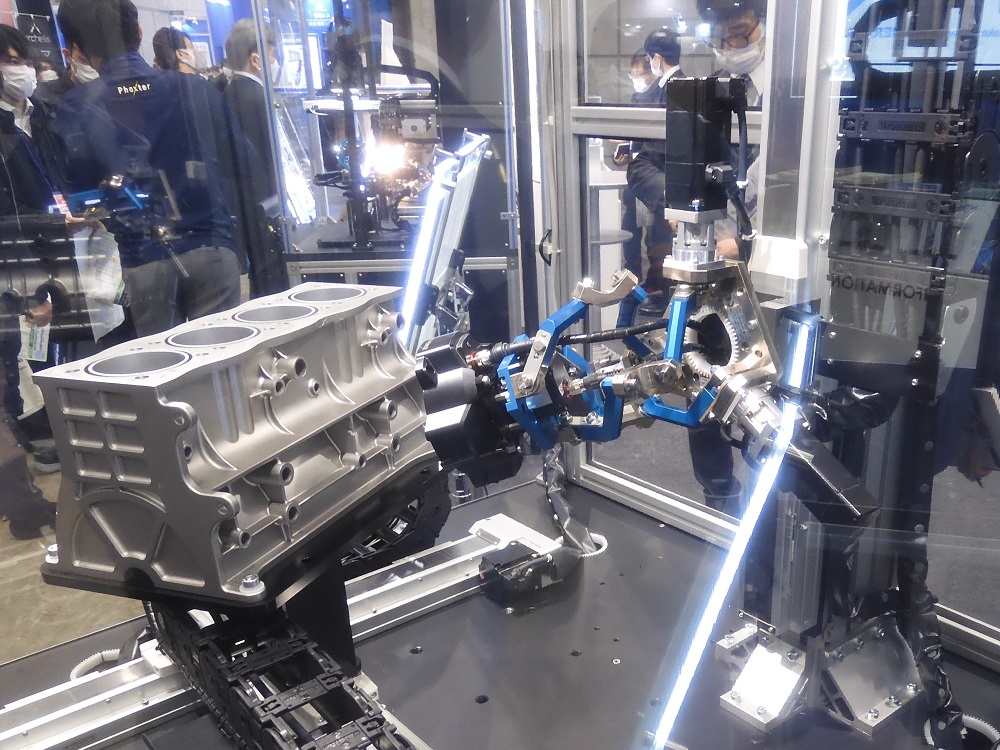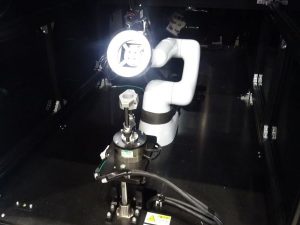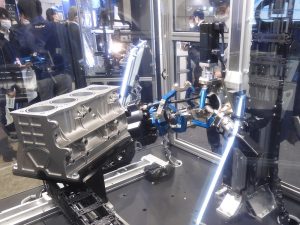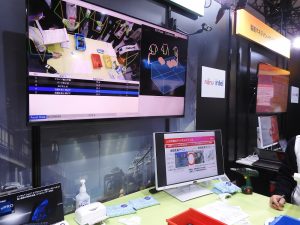
- News
- Basics
- Products
- JP Job shop
- Exhibition
- Interview
- Statistic
- PR
- Download
- Special contents
Exhibition
March 8, 2023

Factory Innovation Week, a large-scale manufacturing exhibition, was held at Tokyo Big Sight in Tokyo, Japan, from January 25 to 27, 2023. Among the technological innovations showcased were significant improvements in inspection equipment, measuring instruments, and artificial intelligence (AI) technology, which attracted the attention of many visitors. Automation of inspection processes was a particular highlight of the event. The utilization of data on the manufacturing site is also gaining momentum, and companies promoted the evolution of their Manufacturing Execution Systems (MES).

HACARUS Check – exhibited by HACARUS
The inspection process traditionally is heavily reliant on human senses, such as visual inspection, often leading to discrepancies in evaluation standards. Automation has long been desired in this field to ensure consistent work quality. With the various technological advancements, proposals for automation have been gaining momentum.
HACARUS, a provider of AI software, exhibited “HACARUS Check”, a visual inspection package that combines image processing AI and a collaborative robot. The package boasts a six-axis robot arm that comes with a camera and lighting mounted at the tip. The robot can capture images of the inspected workpiece from multiple angles while the AI determines whether any defects exist.
AI for visual inspection usually requires a significant amount of image data of both good and defective products for learning. However, HACARUS Check leverages the company’s unique AI technology and requires data only from good products. Mr. Yasuhiro Imamura, CFO, said, “Machine learning requires only a small amount of data, so the system is suitable for high-mix, low-volume production and products with few defects. We already have experience of introducing this technology for strict inspection of automotive parts”.

NTN has proposed the automation of visual inspection with the i-WRIST IWS series.
While a vertical articulated robot is often the choice for automating inspections, several companies have proposed alternative methods. NTN has proposed a visual inspection system that utilizes its wrist joint module “i-WRIST IWS Series”. This module is a combination of the IWS-C01, the heaviest type with a maximum payload of 3 kg that the company released last July, with a visual inspection device attached to an orthogonal robot and a rotary table for turning inspection workpieces. NTN will offer it as a package product.
Shinano Kenshi also did not use a vertical articulated robot. Instead, it proposed a parallel link robot for visual inspection and screwdriving. The robot is suitable for automating simple motions,” explained a sales staff member at the company. The robot requires less space to install, is easy to operate with simple programming, and can be used by beginners.
The latest proposals for data utilization also caught the attention of visitors.
One such proposal was made by i3 DIGITAL, a group company of YASKAWA ELECTRIC. The company offered a solution for integrating data from production sites into a manufacturing execution system (MES). Its reference exhibit, the “Y’s-SF Premium” MES, is capable of connecting to multiple customer plants and their suppliers, enabling the review of information from each plant to be reviewed together. As the use of IoT expands, the question is how to use the data from production sites for business management. “The best solution at the moment is to use MES to manage all the data at once,” said the person in charge of the project. The MES uses edge computers from Stratus Technologies Japan. Because two of the company’s edge computers are synchronized and constantly backed up to each other, data collection and output can continue even if one of the computers stops working.
The trend of collecting data on the movements of workers in production sites is also on the rise.

As a reference exhibit, Fujitsu displayed “Video Recognition AI”.
Fujitsu exhibited its “Video Recognition AI,” which uses AI to recognize a worker’s skeletal structure and analyze his/her movements to determine his/her task. Once the task content is known, data such as the elapsed time for each task can be generated. While the system currently only detects arm and leg movements, the company is developing technology to monitor fingertips as well. “The biggest challenge for digital twinning, which synchronizes a digital virtual factory with a real factory, is knowing the movement of workers. So, we want to develop a technology that allows us to detect workers’ movements in detail,” explained the development team.
February 8, 2023
February 20, 2023
February 9, 2023